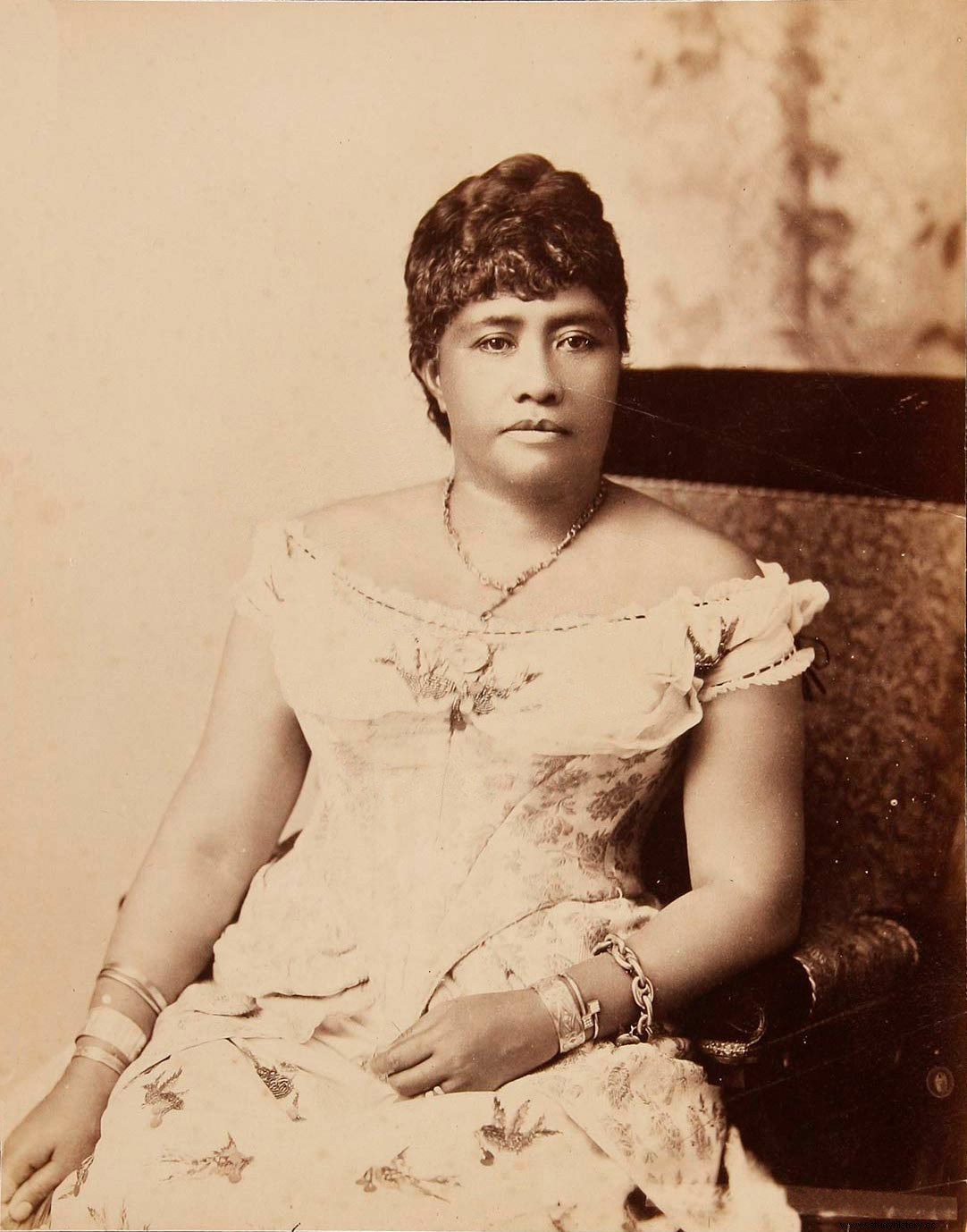Liliʻuokalani (1838 – 1917), also known as Lydia Kamakaʻeha Paki, was the last queen of Hawaii.
King's daughter
 Born September 2, 1838, Liliʻuokalani is the daughter of Annie Keohokālole and Caesar Kaluaiku Kapaʻakea, two Kauaʻi chiefs , one of the main islands of the Hawaiian archipelago. In accordance with the Hawaiian custom of hānai, she was adopted at birth by Laura Kanaholo Kōnia Pauli, granddaughter of the first Hawaiian king Kamehameha I
st
. She is raised with her adoptive brothers and sisters and goes to school where she learns English in particular.
Born September 2, 1838, Liliʻuokalani is the daughter of Annie Keohokālole and Caesar Kaluaiku Kapaʻakea, two Kauaʻi chiefs , one of the main islands of the Hawaiian archipelago. In accordance with the Hawaiian custom of hānai, she was adopted at birth by Laura Kanaholo Kōnia Pauli, granddaughter of the first Hawaiian king Kamehameha I
st
. She is raised with her adoptive brothers and sisters and goes to school where she learns English in particular.
On September 16, 1862, Liliʻuokalani married John Owen Dominis, who became governor of the Hawaiian Islands Oʻahu and Maui, but their marriage was unhappy. John has many adventures and Liliʻuokalani cannot bear children. She does, however, adopt three hānai children.
Accession to the throne of Hawaii
In 1874, David Kalākaua, brother of Liliʻuokalani, succeeded King Kamehameha V to the throne of Hawaii. After he came to power, he gave royal titles to his siblings. In 1877, he announced that he had chosen Liliʻuokalani to succeed him. In April, the princess goes on a diplomatic trip to Europe. Learning that her brother has signed, under duress, a new constitution stripping the Hawaiian monarchy of most of its powers, however, she cuts short her trip.
In 1891, after the death of her brother, Liliʻuokalani acceded to the throne of Hawaii. By popular demand, she is trying to put in place a new constitution restoring the sovereignty of the Hawaiian monarchy. Feeling threatened, European and American industrialists and residents organized themselves into a Security Committee on January 14, 1893, seeking to depose the queen and annex the archipelago to the United States. Anticipating a coup on January 17, they request reinforcements to protect American citizens, and on January 16, 162 sailors and soldiers land in Honolulu Bay.
Coup and counter-revolution
The coup takes place the next day and Liliʻuokalani is forced to abdicate in the face of this coup, hoping to regain her throne in the face of the illegality of the maneuver. An American report effectively concludes that the coup was not legitimate and, in November 1893, American President Grover Cleveland offers her to regain her throne in exchange for an amnesty for the participants in the putsch, which she refuses. . In December, the American minister Albert Willis demanded that the provisional government of the archipelago restore her rights, but he refused. On February 26, 1894, a new report exonerates the putschists. The Republic of Hawaii was proclaimed on July 4, 1894.
In 1895, a failed counter-revolution led to the arrest of Liliʻuokalani, who, suspected of having participated in the rebellion, was sentenced to 5 years of hard labor and a $5,000 fine. She is locked in one of the bedrooms of her former royal residence in Honolulu. During this period, she devoted herself to composing songs and writing her Memoirs . Finally freed after having definitively renounced the throne, she was restored to her civil rights by the government of the Republic of Hawaii in 1896.
Liliʻuokalani tries in vain to recover the Crown assets and is granted an annual pension of $4,000 as well as the income from a sugar cane plantation that she had inherited from her brother.
Liliʻuokalani died on November 11, 1917, at the age of 79, following a stroke.
